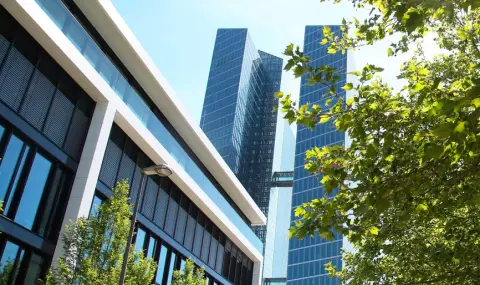The global economic picture is stabilizing, albeit at quite low levels, according to Colliers’ latest report. With global GDP growth set to expand in the region of 3% in the forthcoming years, this is one the poorest results in decades. The CEE economies each face a mix of different challenges, some of which they hold in common. These range from the need to stoke economic growth through deeper structural reforms, to a challenging fiscal picture, to issues related to external financing, or the immediate proximity to the conflict in Ukraine. While economic growth is set to accelerate in 2024 throughout the CEE, relative to 2023, the outlook for the year does look quite a bit worse than it did at the start of the year for most countries in the region.
It is still difficult to see what the external backdrop will be like for ‘emerging’ markets, especially the CEE. The ECB plans to reach its inflation target of 2% by the end of 2025. Expectations are for a first key rate cut by June 2024, with further cuts set to bring the key rate down by 1 percentage point by the end of the year, to 3.5%, which should ease some tension on the markets. Still, uncertainties related to the Fed could more than counter this positive influence.
With still weak, albeit improving, external demand, it falls on capital and investments, as well as private consumption, to drive growth in CEE over the short term. However, relying on household spending does run the risk of causing inflation to run a bit hotter than normal for the foreseeable future. Indeed, Romania, Poland, and Hungary will still be seeing inflation quite a bit higher than central banks would like, even through 2026. This means that monetary policy will have to remain tighter than normal. Otherwise, the relatively cheap labour force and the big divide between wages and productivity, alongside the re-shoring trend, will continue to fuel development within the CEE-6 countries.
IMF forecasts for the six countries show the region growing at 2.4% in 2024 versus 0.5% last year, before accelerating to an average of around 3% per year between 2025 and 2029. The latter figure is more or less on par with the average seen per year between 2010 and 2019, though a bit below the almost 4% seen in the previous decade.
Some aspects to keep track of over the longer term involve potential headwinds regarding the gradual scaling back of EU structural funds heading towards CEE-6 economies. As these countries have seen far sharper growth than their Western counterparts and economic convergence has taken place, this source of cheap money could dwindle a bit. On the more positive side, CEE-6 economies are much more flexible in the sense that structural reforms would likely be easier to enact here and likely yield better results. So, there is that to look forward to over the longer term.
At €1.2billion, the first quarter of 2024 saw CEE investment volumes decline by ca. 15% YoY. According to preliminary results, this is largely in line with European and Global results.
Given the current conditions, particularly in relation to the continued elevated cost of debt, we expect 2024 volumes could reach up to ca. €6.0 billion. This will depend largely on known activity closing as expected, while there is also some consensus that lower volumes may remain throughout 2024.
